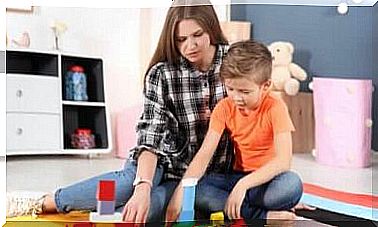Teach Children Mathematics And Problem Solving

What do those who learn mathematics need to know to solve a mathematics problem? This is probably one of the most common questions in the field of math. Mathematics is usually a difficult subject for students. So how do teachers know how to teach children properly?
It is important that teachers remember the basic skills students must develop to learn and understand mathematics, and also how the learning process unfolds. Only in this way can they teach mathematics in the right way.
To understand how mathematics works, students must first master four different aspects:
- Linguistic and factual knowledge to build a mental representation of the current problem.
- Build their own schematic knowledge to cover all available information.
- Strategies to identify what the problem is.
- Have procedural knowledge that allows them to solve the problem.
Furthermore, it is important to keep in mind that these four aspects are developed in four steps which are:
- Problem translation
- Problem integration
- Solution planning
- Problem solving

1. Teach children mathematics: Problem translation
The first thing students need to do to solve a math problem is translate it into an inner representation. In this way, they get an overall picture of available data and goals.
But for the text to be translated correctly, students must know the specific language and the correct factual knowledge. For example, they should know that a square has four equal sides.
Research suggests that students often focus on the superficial aspects of the problem text. This technique can be useful when the superficial words go in the direction of the solution, but when this is not the case, this approach leads to several obstacles.
And it’s even worse if the students do not even understand what the problem is asking them to do. It is no use trying to solve something they do not understand.
This is why teaching children mathematics must begin with learning about problem translation and explaining language problems. Many studies have shown that specific training to create good mental representations of problems can improve math skills.
2. Problem integration
When students translate the problem into a mental representation, the next step is to “tie” all the data together. To do this, it is important to recognize the goals of the problem. In addition, students need to know what resources they have to deal with it. In other words, this stage requires that they have a general perspective on the whole mathematical problem.
Any mistakes they make when integrating the data will make them feel lost and something they do not fully understand. In the worst case, the approach to the problem will go in the completely wrong direction. Therefore, it is important to emphasize this aspect of mathematics teaching, because it is the key to fully understanding the problem.
Just like in the previous step, students tend to focus on the superficial rather than the important aspects. When it’s time to determine the nature of the problem instead of seeing the goal itself, students look for the least relevant data.
However, this can be solved through specific instruction and show students that the same problem can be presented in other ways.

3. Teach children mathematics: Solution planning and overview
If students are able to fully understand the problem, the next step is to create an execution plan to find the solution. This is the time to divide the problem into small tasks that make it easier to gradually come to the solution.
This is probably the hardest part of solving a math problem. It requires cognitive flexibility along with effort, especially when students are faced with a new problem.
It may seem impossible to teach children mathematics about this aspect, but research suggests that it is possible to improve planning skills through various methods. There are three important principles for doing this:
Generative learning
Students learn better when they actively build their own knowledge. It is a central aspect of constructivist theories.
Contextualized instruction
Solving problems in a meaningful and useful context helps students to understand better.
Cooperative learning
Collaboration can help students share their common ideas and reinforce their knowledge with other ideas. This also encourages generative learning.
4. Problem solving
The last step in solving a math problem correctly is of course finding the solution. To do this, they must resort to prior knowledge of how certain operations or parts of a problem can be solved. The key to good execution is to internalize basic skills that allow students to solve the problem without interfering with other cognitive processes.
Exercise and repetition are good methods for internalizing these skills, but there are many more. If the student uses these other methods in mathematics (such as the notion of numbers, counting, etc.), they will strengthen their learning process.
As you can see, solving math problems is a complex mental exercise that involves many cognitive processes. Teaching math in a systematic and rigid way is one of the worst mistakes a teacher can make.
The most important thing is that if a teacher wants skilled students, they must teach students to be flexible and approach the problem by using these four aspects.









